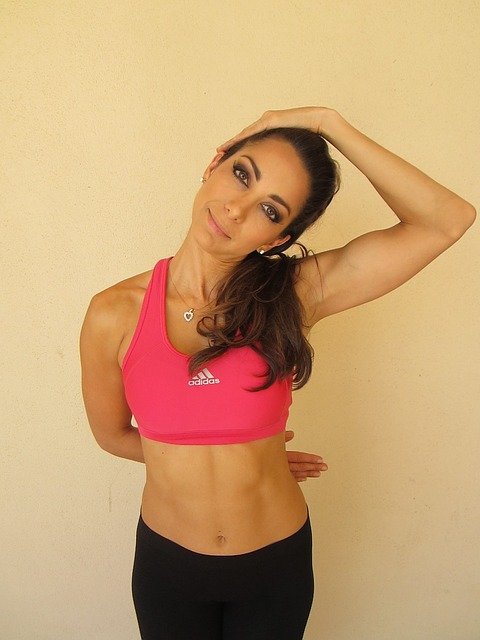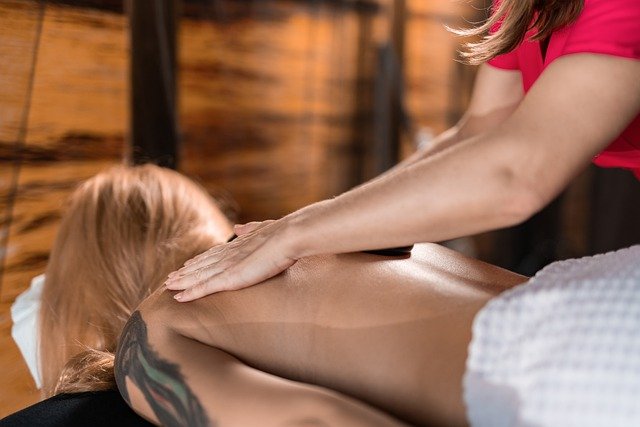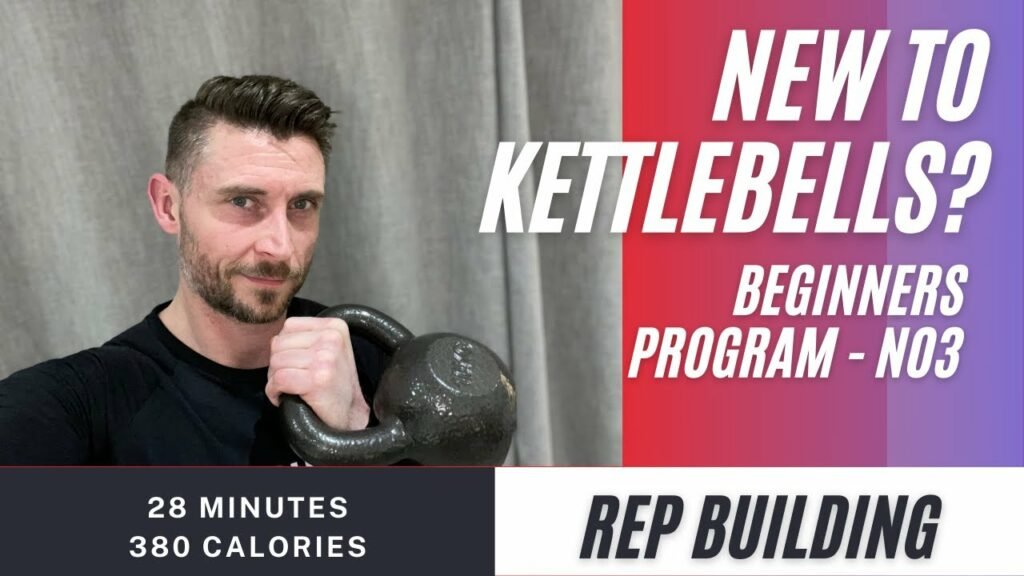Why Do Kettlebells Hurt My Neck? (Reasons Why & Tips to Help Remedy)
One of the more common talking points when discussing kettlebell technique is – why do kettlebells hurt my neck?
This could be down to a number of factors, which we will look at below.
It’s surprising at how technical a kettlebell exercise can be, when you break it down. For the majority of people who train with them get on great.
However, the slightest inaccuracy in your form shall we say, can have a detrimental effect on your training as a whole.
Why Do Kettlebells Hurt My Neck?
Kettlebells can hurt your neck for one of many reasons. The most obvious would be down to your own form/technique which may need some attention. From having a death grip on the handle to straining too much at either the beginning or end phase of the swing remains to be seen. If you are new to training with kettlebells, or the volume of training you are doing, mixed with a kettlebell that might be either too heavy or even too light! If you have any previous neck injuries or you aren’t warming up and stretching to a reasonable standard, then these may also have an impact on getting a “pain in the neck” when using kettlebells. For more in-depth answers read on.
Theres a lot of conflicting advice regarding what is advised and what’s right or wrong. The options given here are pointers to help you pinpoint the issue you may have. If it helps you then great news, but i’m not suggesting the below are the only things you need to consider.
Pain In The Neck
Having or getting pain in your neck can be very debilitating to the individual and should be taken very seriously too.
When your neck is sore from a poor night’s sleep or sudden injury. It can make simple tasks a real challenge.
Simple tasks such as turning your head when driving, lifting objects or just participating in any sport can become painful and uncomfortable.
Common symptoms for neck injuries include:
- Difficulty turning the neck
- Headaches
- Muscle spasms in neck and shoulders
- Neck pain
- Stiffness in the neck
- Weakness in the legs, arms, hands or fingers

Let’s look to see how this can be an issue when adding a kettlebell into the mix.
Posture and Technique
The most common reason as to why kettlebells hurt your neck would be down to your posture, which would need a little bit of guidance.
If you are unable to get to a certified kettlebell trainer, then it’s worth filming yourself to see how you look when working out with kettlebells.
You could also use a mirror to glance at yourself doing the movements, however, some people advise against this as you should be focussing your attention on the job in hand and not looking into a mirror.
I can understand this, so at the same time its down to you, as to whether you use a mirror or not.
Tension in the shoulders and traps during swinging accounts for a big part of peoples problems. Whether you are gripping the kettlebell as if your life depended on it, which in turn would cause tension up your arms, shoulders and neck.
If your grip is ok, you might have massive tension in your shoulders and traps in general when working out.
Try to relax and lower those shoulders if this is the case. Learning to engage your lats and ease off your traps, could be a game-changer for you (pretend as if you’re holding £50 notes under your armpits).
Check out the video below for some swing basics.
Remember, your neck should be neutral. Keep it in line with your spine as it is standing straight up – the head moves with it.
Some people finish by thrusting the head forward at the top of a swing, be aware of this and don’t let it happen.
The kettlebell swing is not a weight bearing neck exercise, it is an explosive hip movement. Think of it as a jump where your feet never leave the ground.
If your back is rounded during your swings, work on keeping it straight. Do this by keeping your eyes forward at all times (eyes straight ahead)
You need to hinge at the hip, not squat. The only part that should move with your swings is from your hips up. You should fold over while keeping a straight back.
Also, if you have no snap in your hips to power your bell, make sure the power comes from your hips and makes the bell float in the air.
Your shoulders should only be used to control the bell from going to far up.
Weight And See
Another common reason kettlebells hurt your neck is down to the kettlebell itself.
This could be down to the fact it’s too heavy or even too light for you.
If it’s too heavy, you could be lifting your head to gain extra leverage when pulling the kettlebell from between your legs in order to lift it. Which over time could do serious damage to your neck.
The same goes for the part of the swing when the kettlebell reaches its highest point, once again straining to lift and hold the kettlebell in the correct position may cause you to snap your head back to control the bell.
If this is the case, try a lighter load, see if the problem occurs?
If you can’t find a solution, lay off exercise for a week or so and practice your posture.

Heads Up
Your head position is very important too, look down to the horizon during swings, all the time.
Look about 8 feet in front of you at the floor and anchoring your eyes to that point, seems to work well for some. Any higher, means you could be lifting your head more than it should be, which may cause neck pain.
The other thing you have to remember is that kettlebells move differently to other equipment. With the centre of mass being through the bell part of the kettlebell, unlike a dumbbell that’s through the centre of the bar where you hold.
This means the kettlebell is always pulling away from you as its swung, which translates to being more likely to pull and jerk on your shoulders and neck. With gravity and force pulling the kettlebell away from you.
Make sure you are in full control of the kettlebell, with a good tight posture and clean form.
Stretching, Previous Injuries & Listening To Your Body
It goes without saying that if you aren’t stretching before and after every workout, you run the risk of pulling a muscle anywhere on the body.
Add to that the fact of sleeping uncomfortably (slight neck pain) and then throw into the mix the fact you have sat a your desk all day hunched over a computer screen working.
If you are jumping right into the action, without the correct amount of warming up, you are more likely to pull something, maybe even your neck, especially with kettlebells.
Theres lots of helpful neck exercises you can do, by heading over to YouTube and watching some videos which suit your needs.

You also can’t overlook the correct type of breathing when exercising, as your neck should not hurt during exercise.
A reason why it could hurt is improper breathing. When performing lifting exercise be sure to follow regular breathing patterns to prevent valsalva maneuver.
Not breathing during exercise can increase intrathecal and blood pressure causing unnecessary head and neck pain, extra strain on the body and even light headedness. If you are demonstrating proper breathing and pain does not ease, you should see a doctor for further evaluation.
If you have had any previous injuries in and around the neck area, you are more prone to injuring it again. Which makes the previous point of warming up even more crucial.
One thing that gets overlooked is the fact you might have weaker muscles in and around the neck area.
Which means the muscles, ligaments and tendons in the neck may be working harder than they need to, to compensate.
You must also listen to your body as to whether you workout in the first place, if you feel a muscle has been tweaked prior, or you feel lethargic from the day just gone, then think twice about exercising.
its fine to push through on the odd occasion if you aren’t feeling it, but there’s a difference between that and trying to push through a pulled muscle or fatigue.
Getting a massage from a professional can help relieve some of the pain and tension in and around the area in question.

Finally, kettlebells in particular swings might not be for you. Some people have found avoiding swings entirely has helped them with neck pain.
Not an ideal scenario, but leaving out swings or said exercises that are causing issues might have to be considered here.
Final Thoughts…
If you enjoyed this, then please check out the YouTube channel, with over 50 workouts which include the use of kettlebells, resistance bands, dumbbells and even body weight exercises too.
Don’t forget, I will be adding more workouts weekly to help you stay fit and healthy at home with just the use of a kettlebell.
With workouts of all types, for all fitness levels. You know that we have you covered, so stay tuned for more.
If you enjoy sport and use CBD to help with your recovery in between gruelling workouts, then your are in the right place. Here at Sport CBDs, we train hard and recover the best way possible…
We have regular workouts (check out the YouTube channel), CBD news and CBD products to help you gain that edge!
If you wanted to check out the reputable CBD we have on offer here at the site, then please head to the Sport CBDs Store. We also do fitness clothing and yoga accessories too.
Untill next time, all the best…


